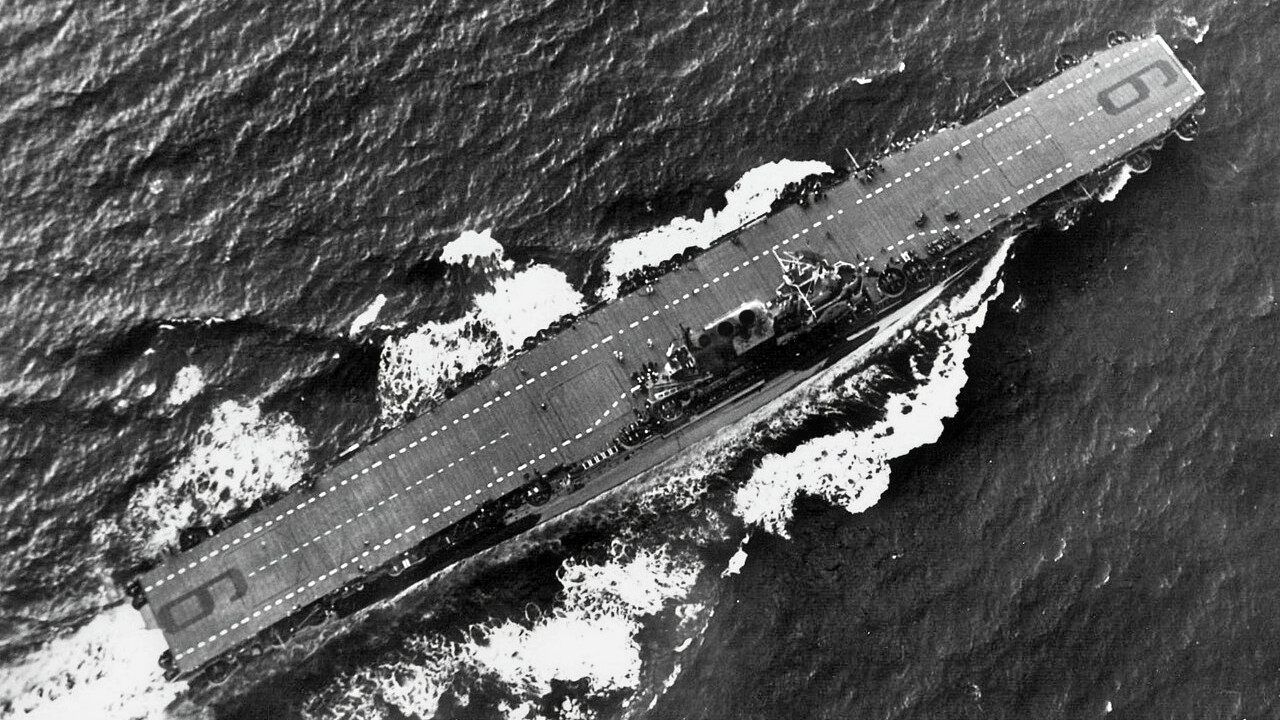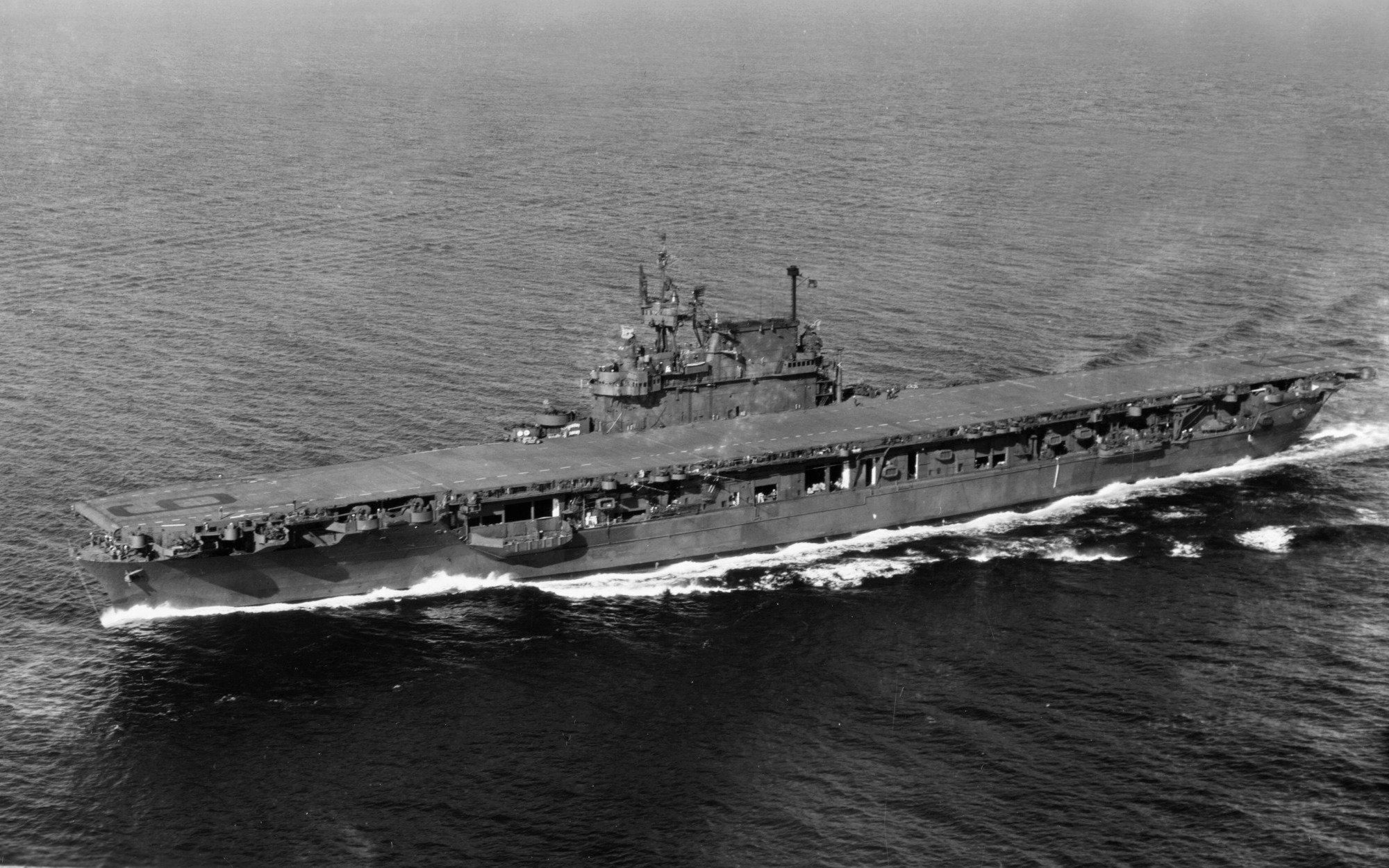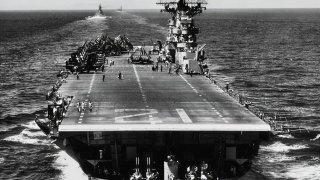Ranked: 5 Best Aircraft Carriers of World War II
The top five WWII aircraft carriers—chosen for their strategic impact and bravery—include the iconic USS Enterprise (CV-6) for its extensive combat achievements and resilience, and the British HMS Ark Royal (91), instrumental in key victories like the sinking of the Bismarck.
What You Need to Know: The top five WWII aircraft carriers—chosen for their strategic impact and bravery—include the iconic USS Enterprise (CV-6) for its extensive combat achievements and resilience, and the British HMS Ark Royal (91), instrumental in key victories like the sinking of the Bismarck.

-Japan’s Hiryu represented the fierce capability of the Imperial Japanese Navy, notably at Midway. “Taffy 3,” an entire task unit of six escort carriers, triumphed against all odds at Leyte Gulf. Lastly, HMS Illustrious stood out for its versatility and long service across both Mediterranean and Pacific theaters.
-Each demonstrated exceptional resolve in one of history’s most intense conflicts.
Five Best Aircraft Carriers of World War II
Five Best Lists are virtually guaranteed to generate controversy, as
(1) they’re admittedly highly subjective, though I always do my damnedest to back my expressed opinions with solid objective facts.
(2) someone’s always guaranteed to get butthurt because their favorite plane/gun/ship/tank/whatever was omitted from the list.
That said, “Once more unto the breach, dear comrades,” as I open on what Yours Truly considers to be the Aircraft Carriers of World War II.
USS Enterprise (CV-6)
Might as well start with the most successful warship of the bunch; the “Big E,” AKA “The Grey Ghost,” not to be confused with either the British ocean liner Queen Mary’s WWII troopship alter ego or American Civil War raider John S. Mosby, not to mention the warship that inspired the nickname of a certain starship from a rather popular sci-fi franchise.
How Successful was the Big E?
Allow me to quote my colleague, Harrison Kass, “When the Japanese finally capitulated, after the atomic bombings of Hiroshima and Nagasaki, the Enterprise’s guns/planes had shot down 911 enemy aircraft, sunk seventy-one ships, and damaged and destroyed 192 more...The Enterprise was even the first American ship to sink a full-sized Japanese warship in the Pacific Theater, the submarine I-70. In total, The Enterprise finished the war with twenty battle stars, more than any other warship during the war.”

As for that “Grey Ghost” nickname, that was inspired by the fact that she was erroneously declared sunk by Hideki Tojo’s propaganda machine on three separate occasions.
Pretty hard to argue with that body of work, eh?
HMS Ark Royal (Pennant No. 91)
Arguably the most revered aircraft carrier in the prestigious history of Great Britain’s Royal Navy, because the RN still commemorates her loss every year. As with the USS Enterprise, Ark Royal had a fictitious pop culture icon nexus, as she was the vessel that James Bond served on, long before he embarked on his, rather paradoxical-sounding, career as “The World’s Most Famous Secret Agent.”
Making history right off the bat as Britain’s first purpose-built fleet carrier, she had a short lifespan of just under three years from her December 1938 commissioning to her November 1941 sinking by the Kriegsmarine’s U-81.

Yet in that short time, she accomplished a lot, especially her participation in the sinking of the feared German battleship Bismarck. Ark Royal also played an indirect role in the destruction of the pocket battleship Graf Spee, joined in the first U-boat kill of the war, and proved essential in protecting supply convoys to Malta.
Imperial Japan Navy’s (IJN) Hiryu (“Flying Dragon”)
Lest anyone accuse me of being either too America-centric, or too Western-centric, rest assured that I never forget former U.S. Secretary of Defense (and former U.S. Marine Corps Commandant) Jim Mattis’s sobering reminder that, “The enemy gets a vote.”
Although the Axis eventually lost WWII, they still produced their fair share of successful carriers. At least the IJN did, anyway, the Nazi German Kriegsmarine’s lone flattop, the Graf Zeppelin, had a pretty inauspicious career.
Accordingly, one can make a reasonable case for the “Flying Dragon.” Even before Imperial Japan officially entered WWII, Hiryu’s crew was “bloodied” in combat, as her aircraft participated in the September 1940 invasion of French Indochina. Then of course came the vessel’s role in WWII proper as a key participant in the Pearl Harbor raid, followed shortly thereafter by Wake Island, and the conquest of the Dutch East Indies.
Last but not least, there’s the Battle of Midway. Surviving the initial onslaught that annihilated her fellow IJN carriers Akagi, Kaga, and Soryu, coincidentally herself a “Dragon” ship, as in “Blue Dragon”, the Hiryu got in a few final licks before herself being finally sunk by USN Douglas Dauntless dive bombers; her dive bombers and torpedo bombers severely damaged the USS Yorktown, setting the stage for the “Fighting Lady” to be finished off by the IJN submarine I-168.
U.S. Navy Taffy 3
I’m going employ some outside-the-box thinking here by giving one of my Top five awards to an entire group of “flattops” instead of an individual carrier; this group merits its place on this list by punching far above its weight and winning against impossible odds: the six itty-bitty escort carriers (CVEs, AKA “baby flattops” or “jeep carriers”) of Task Unit 77.4.3, better known as "Taffy III": USS Fanshaw Bay, St. Lo, White Plains, Kalinin Bay, Kitkun Bay, and Gambier Bay. It was during the Battle of Samar phase of the Battle of Leyte Gulf on October 25, 1944 that Taffy III, under the command of Rear Admiral Clifton “Ziggy” Sprague, cemented its place in history.

These six “jeep carriers,” along with three destroyers (DDs), four tiny destroyers escorts (DEs), and 322 aircraft, miraculously prevailed over seemingly hopeless odds facing Force A of IJN Vice Admiral Takeo Kurita’s 2nd Fleet consisting of four battleships – including the Yamato, THE most powerful battleship ever built: six heavy cruisers, two light cruisers, and eleven destroyers.
In exchange for the loss of St. Lo and Gambier Bay along with two DDs, one DE, and twenty-three planes, the outmanned and outgunned American force sank three heavy cruisers, damaged two battleships, three more heavy cruisers, and one destroyer, and inflicted 2,700 Japanese casualties.
HMS Illustrious (Pennant No. 87)
Many thanks to my colleague Peter Suciu for the inspiration here.
For the sheer breadth of her career, Illustrious is the most impressive of the bunch, as she served in the Mediterranean and the Pacific Theatres of WWII. In the former, she participated in the Battle of Taranto in late 1940, wherein her aircraft sank an Italian battleship and badly damaged two others. In the latter, she launched strikes against the Japanese-occupied Dutch East Indies in 1944 and later participated in the Battle of Okinawa.
About the Author
Christian D. Orr is a Senior Defense Editor for National Security Journal (NSJ). He is a former Air Force Security Forces officer, Federal law enforcement officer, and private military contractor (with assignments worked in Iraq, the United Arab Emirates, Kosovo, Japan, Germany, and the Pentagon). Chris holds a B.A. in International Relations from the University of Southern California (USC) and an M.A. in Intelligence Studies (concentration in Terrorism Studies) from American Military University (AMU). He has also been published in The Daily Torch , The Journal of Intelligence and Cyber Security, and Simple Flying. Last but not least, he is a Companion of the Order of the Naval Order of the United States (NOUS).
Image Credit: Creative Commons and/or Shutterstock

